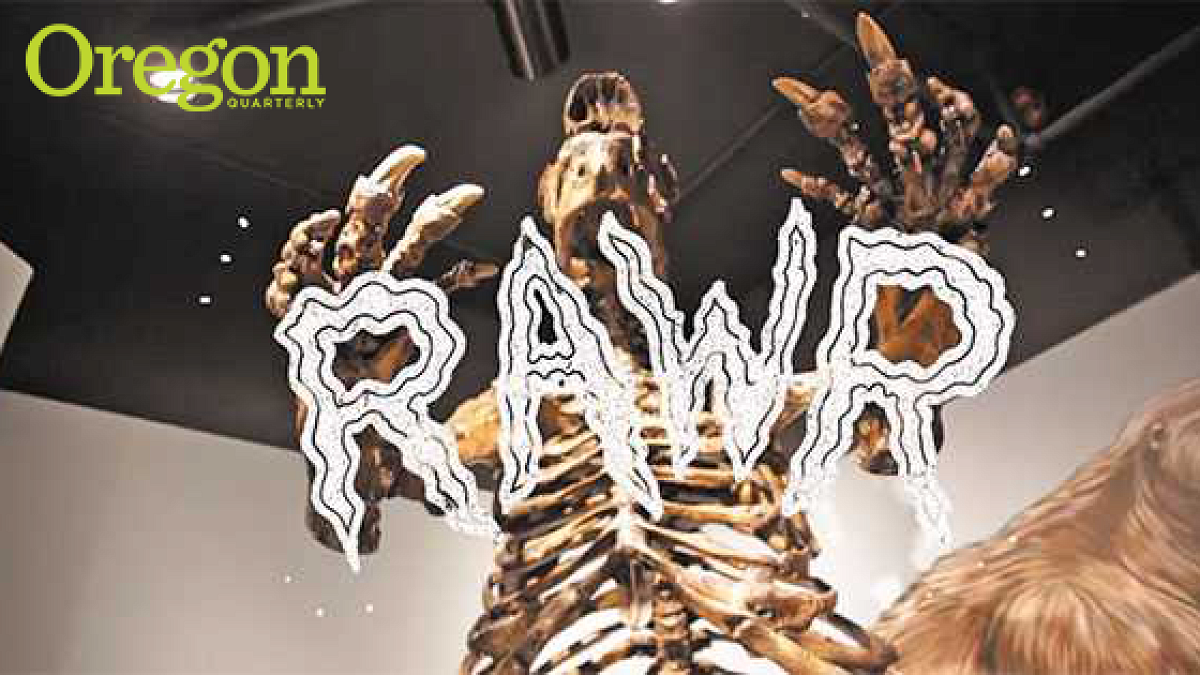Happy students lounge on the quad in the sunshine, books and laptops spread out around them. One plays a guitar, others toss a Frisbee. In the background, stately red brick buildings house classrooms and laboratories, where more smiling, attractive students listen intently to lectures and peer into microscopes before graduating and launching exciting careers. One variation or another of this idyllic academic scene seems to anchor the television commercials for nearly every college and university out there. Switch the mascot and school colors, and they’re practically interchangeable.
But Ducks do things differently, so when the University of Oregon created its new TV spot, which debuted during the 2015 Rose Bowl, it went another route. Opening with a quiet scene of a quintessentially Oregon forest and a voiceover pondering the power of asking, “What if …?” the UO’s new commercial jams dozens of historical moments, achievements, campus icons, and other stories into a minute or so of action. The idea is to entice curious viewers—particularly prospective students—to find out more. And even for those who know the UO well, it holds some surprises.
We’ve decoded a few of those flash-frame stories below. To watch the commercial and explore more, visit www.exploreif.com.
—Ann Wiens
The waffle iron
“If” sparks a revolution with a waffle iron … A reference to a light-bulb moment associated with the beginnings of Nike, this evokes legendary track coach Bill Bowerman, whose tinkering with his wife’s waffle iron led to the first “waffle-soled” running shoes. It’s an oft-told tale at the UO, but may well be the first mention of a waffle iron in a university television commercial.
The longhouse
In the late 1960s, the UO repurposed a World War II-era army barracks to serve as a longhouse for the university’s Native American students. The dilapidated structure was replaced in 2005 by the Many Nations Longhouse, a sacred gathering place for members of this community. Elsewhere on campus, a long-term student-led project culminated last year in the installation of a semicircle of flagpoles framing the Erb Memorial Union amphitheater, flying flags representing each of Oregon’s nine sovereign tribes.
North to Alaska
Last summer, four professors and 19 students from the School of Journalism and Communication spent a month in Cordova, Alaska, exploring what being a storyteller really means. Incorporating photography, painting, video, and writing, the team examined the topic of climate change through narratives and images that represent a new approach to the rapidly changing field of journalism. They came home and put their stories together on a website called Science and Memory.
Mrs. Education
Edith Louise (Starrett) Green, BS ’40, was the second woman elected to represent Oregon in Congress, where she was reelected nine times, serving from 1955 to 1975. A former teacher, she served on the Committee on Education and Labor, and her intense interest in—and influence on—education policy gained her the nickname “Mrs. Education.” She authored the 1963 Higher Education Facilities Act, the 1965 Higher Education Act, and, most significantly for generations of women to come, Title IX, part of the 1972 Higher Education Act that prohibits higher education institutions that receive federal funding from discriminating against women.
Einstein and friends
Most gargoyles resemble demons, but the UO’s Lokey Science Complex is watched over by guardians of a different sort. The visages of Albert Einstein, Sir Isaac Newton, Marie Curie, James Clerk Maxwell, Alan Turing, John von Neumann, and Thomas Condon (along with a drosophila (fruit fly) and a school of zebrafish) dot the building’s walls. The sculptures are the work of Northwest artist Wayne Chabre, who created the pieces from hammered copper between 1986 and 1990.
Giant sloths and tiny horses
In 1876, Thomas Condon brought his fossil collection along when he joined the UO as one of its first three professors. That collection is still at the Museum of Natural and Cultural History, which underwent a major expansion last year, adding a new wing to house its Explore Oregon exhibit. Visitors can see the skeletons of a giant sloth (above) and tiny prehistoric horse that once roamed the region, or ponder the museum’s 10,000-year-old sagebrush bark sandals. The museum also serves as a hub for paleontological and archaeological research in the state.


